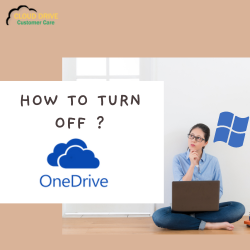The two most popular cloud storage services are Google Drive and Microsoft OneDrive. Although they fundamentally provide the same service, their methods are very dissimilar.
OneDrive’s clients are businesses, as opposed to Google Drive’s consumer-first approach. That helps to explain why Microsoft has a foot in the desktop and one in the cloud, and why Google just uses the cloud.
Google Drive and Microsoft OneDrive are essentially two sides of the same coin. The results, however, will always vary, and each will have a different effect on every organization, including yours.
To assist you in selecting the best option for your company, let’s examine the differences between OneDrive and Google Drive.
Comparison of Google Drive vs. Microsoft OneDrive
OneDrive and Google Drive’s various strategies each have their own advantages and disadvantages.
These are Microsoft OneDrive’s primary advantages:
Mobile collaboration
Businesses may upload, edit, and share files using the free OneDrive mobile application without being restricted to their desktop. This degree of real-time collaboration enables companies to increase productivity without incurring additional administrative costs.
Comprehensive ecosystem
Users of OneDrive can access a variety of Microsoft Office applications, including Word, PowerPoint, etc. It has both a desktop and a web version, making it simple to operate both online and offline.
Drawbacks of OneDrive
The following are the primary drawbacks of Microsoft OneDrive:
lack of integration with third-party apps
Integrations with outside apps are not yet supported by OneDrive for Business. Calendars, chat boards, and project management tools are just a few examples of non-Microsoft products that users cannot sync with their corporate accounts.
Microsoft can’t keep your data safe.
Although Microsoft provides protection against risks to the infrastructure, such as hardware and software failures, power outages, and natural catastrophes, it does not shield your data from human error, unauthorised deletion, program or sync failures, malevolent insiders, malware, or ransomware. Study more.
What Google Drive Has to Offer
These are Google Drive’s primary advantages:
Collaboration is simple.
Google Drive’s shareability and real-time editing tools have advanced both personal and business cooperation. With ease, share documents, spreadsheets, and other content types with coworkers, relatives, and friends.
Uncomplicated user interface
When it comes to usability, Google Drive excels thanks to its simple user interface. One of its best features is its effective built-in search engine, which enables users to look up files by kind and owner.
Drawbacks of Google Drive
The following are Google Drive’s key drawbacks:
Working solely through Gmail
Real-time editing and shareability suffer if the recipient doesn’t have a Google account. Before seeing the content, the recipient must have access authorization, and even then, no altering is allowed at all.
Google can’t keep your information safe.
Regarding infrastructure threats, including hardware and software failures, power outages, and natural disasters, Google has best-in-class security. It does not provide any data protection against human error, unauthorised deletion, application or sync problems, malevolent insiders, malware, or ransomware on your end, though.
What distinguishes Google Drive from Microsoft OneDrive?
The following are the main distinctions between Google Drive and Microsoft OneDrive:
The cost of OneDrive and Google Drive varies according to the available storage.
These are the OneDrive price schedules:
- Users can use 5 GB of storage space for free with the free plan.
- Business Plan 1: Each user gets 1 TB of storage for $5 per month.
- Plan B: Unlimited storage for $10 per user per month.
- Office 365 Business Premium: For $15 per month per user, you get full access to Office and unlimited storage.
In contrast, Google Drive’s price options include the following:
- Free Plan: Take advantage of 15 GB of storage without spending a dime.
- Basic: Users receive 30 GB of storage capacity for $6 per user each month.
- Business: For $12 per user per month, users receive unlimited storage, enhanced security, and administrative capabilities.
- Enterprise: Everything is yours! $25 per user per month gets you unlimited storage and sophisticated admin controls.
Speed
When it comes to speed, Google Drive and OneDrive are on par. The distinction appears when working with native Microsoft files that enable block-level copying, which divides a file into smaller packages. The complete file is not transferred to the cloud; only the changes are. Data transmissions are quicker as a result.
Block-level copying technology, though, is of no real use if you use Google productivity programmes because OneDrive and Google Drive both operate at parity.
File Exchange
OneDrive and Google Drive are used for file syncing, sharing, and retrieval in addition to file storage. Because it demonstrates the extent of team collaboration, the simplicity of file sharing is an important consideration when selecting cloud storage.
Sharing files via OneDrive or Google Drive can be done in one of two ways. You can grant someone access to files by providing their email address or by sharing a URL that can be shared. View, comment, and edit are the three types of permissions that Google users can grant. On the other side, OneDrive provides greater user permission options thanks to the assistance of SharePoint servers.
Privacy
Fans of Google Drive and OneDrive may both agree that data privacy issues are a major concern. Google is well known for gathering user data for specialized advertising. On the other hand, Microsoft is free to search through user data for any offensive material. Of course, none of these strategies is damaging, but it’s not exactly reassuring to consider someone else looking through your data.
| Microsoft OneDrive | vs. | Google Drive |
| Plans for businesses start at $5 per user per month for 1TB of storage. | Price | Plans for businesses start at $6 per user per month for 30 GB of storage. |
| Block-level copying enables rapid revision of native files. | Speed | Google apps increase output. |
| With SharePoint servers, there are three tiers plus additional layers of user permission. | File Sharing | Permission levels for users are view, edit, and comment. |
| Sync files across all devices with the OneDrive app. | File Syncing | All devices may sync files using the Backup and Sync app. |
| use user data to mark “objectionable” data. | Privacy | uses user data to generate ads. |
| Version | Price | Storage | Cost | |
| Google Drive | – | Free | 15 GB | 0 |
| $1.99/month | 100 GB | $0.020/GB | ||
| $2.99/month | 200 GB | $0.015/GB | ||
| $9.99/month | 2 TB | $0.005/GB | ||
| OneDrive | Basic version | Free | 5 GB | 0 |
| Standalone version | $1.99/month | 100 GB | $0.020/GB | |
| Microsoft 365 for personal | $6.99/month | 1 TB | $0.0068/GB | |
| Microsoft 365 for family | $9.99/month | 6 TB | $0.0016/GB |
Google Drive versus OneDrive in Personal (Family) Pricing:
Microsoft OneDrive vs Google Drive in Enterprise (Business) Pricing:
| Google Drive | Entrepreneurs | $6/month | 30 GB | $0.2/GB |
| Business standard version | $12/month | 2 TB | $0.006/GB | |
| Business upgraded version | $18/month | 5 TB | $0.004/GB | |
| OneDrive | Business Plan No. 1 | $5/month | 1TB | $0.005/GB |
| Business Plan No. 2 | $10/month | Unlimited storage | – | |
| Microsoft 365 business basic version | $5/month | 1 TB | $0.005/GB | |
| Microsoft 365 business standard version | $12.5/month | 1 TB | $0.012/GB |
The two price charts above unambiguously demonstrate who is more advantageous between Google Drive and OneDrive’s free and premium plans. OneDrive is less expensive than Google Drive in terms of price for the same amount of storage, though. Furthermore, OneDrive provides additional cloud storage for commercial purposes. If you value affordability and storage space, we recommend using OneDrive as your primary cloud storage service or combining OneDrive personal and business on the same machine.
Google Drive vs. OneDrive: Which Provides Better Cloud Storage?
There is no response. Everything comes down to your needs. For instance, since your team is already a part of the Google ecosystem and most of your team members use Gmail, choosing Google Drive makes sense. The same logic also applies to OneDrive.
Spanning makes it possible for prompt backup and speedy restoration, protecting the data on OneDrive and Google Drive from all types of threats and ensuring business continuity.
To see how Spanning helps safeguard OneDrive and Google Drive data, choose a platform from the list below.





